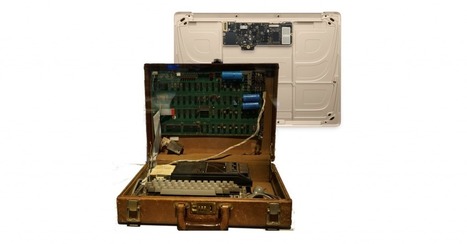In the past 40 years our personal computers have, of course, become immensely more powerful and convenient, but the roots of our interest in personal computing haven’t changed. And, against many odds Apple, has become a giant, world-spanning, immensely rich company.
In retrospect, we can see three Apple eras.
Apple 1.0 was a turbulent period: The rise of the Apple ][, its loss to the IBM PC and Microsoft; the hope and trouble with the Macintosh; Jobs forced out followed by a succession of “professional” CEOs and progressively deteriorating finances.
In retrospect, Jobs’ departure from Apple was one of the best things that happened to him and the company he co-founded. If hadn’t left for an outside tour, the Pixar success and the NeXT technical achievements and business challenges, he wouldn’t have been able to return and jump start the company’s next phase.
Apple 2.0 began in late 1996 when Jobs managed what turned out to be a reverse acquisition of Apple. We owe much gratitude to then-CEO Gil Amelio who unwittingly saved the company hiring Steve to “advise” him. Jobs’ advice? Show Amelio the door and install himself as “interim” CEO. Jobs then made an historic deal with Bill Gates which gave him time to let his team of NeXT engineers completely rebuild the Mac OS on a modern Unix foundation. Steve also rummaged through the company and found Jony Ive who gave us the colorful iMacs, the first of a series of admired designs.
What followed is recognized as the most striking turnaround story in any industry, one that has been misunderstood and pronounced as doomed at almost every turn. The list of Jobs’ “mistakes” includes killing the Macintosh clone program by canceling Mac OS licenses; getting rid of floppies and, later, CD/DVD-ROMs (mostly); entering the crowded MP3 player field; introducing iTunes and the micropayment system; the overpriced, underpowered $500 iPhone; the stylus-free iPad (ahem)…
We’ve seen the punishment for these mistakes: Apple sells approximately $250B worth of iPhones every year, that’s six phones every second manufactured and delivered to more than 130 countries.
Despite it’s enormous size and influence, Apple’s business remains simple to understand. The company makes personal computers, as illustrated in this telling line-up:
Personal computers, small, medium and large.
Everything else Apple does — from iTunes to iCloud storage, apps and accessories — has one and only one raison d’être: Push up the volumes and margins of the company’s personal computers.
Steve Jobs left us in early October 2011, Too Soon, as I wrote in my heartfelt homage to the once unmanageable co-founder who turned into a manager extraordinaire, captain of industry, and editor-in-chief of a team of designers, engineers, supply-chain managers, and finance experts.
We’re now in the Apple 3.0 era, under Tim Cook’s leadership.



 Your new post is loading...
Your new post is loading...








"Apple sells approximately $250B worth of iPhones every year, that’s six phones every second manufactured and delivered to more than 130 countries." A nice and very well written happy birthday anticipated note as Apple is turning 40 and keeps being both exciting, challenging, and not fully predictable. By one of my former board members.
"Apple sells approximately $250B worth of iPhones every year, that’s six phones every second manufactured and delivered to more than 130 countries." A nice and very well written happy birthday anticipated note as Apple is turning 40 and keeps being both exciting, challenging, and not fully predictable. By one of my former board members.